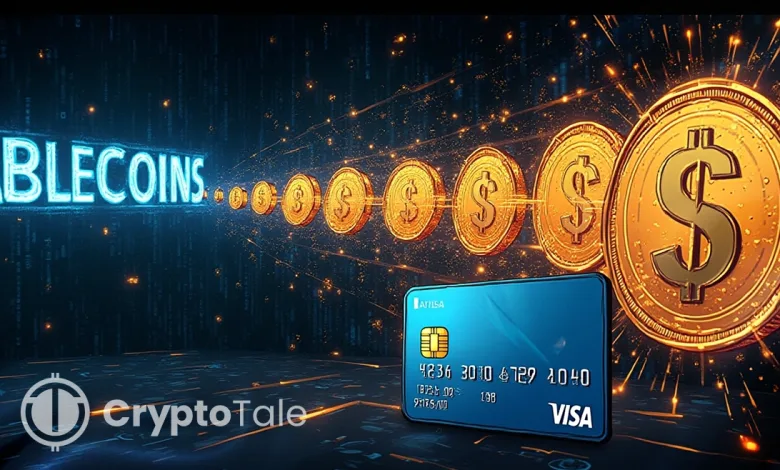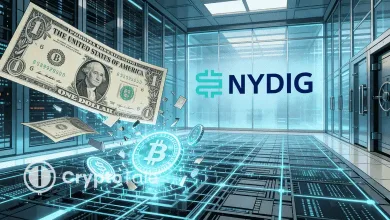Visa Expands Stablecoin Network Across Four Global Blockchains

- Visa introduces four stablecoins across four networks to strengthen digital settlements.
- Stablecoin-linked card spending increased fourfold during Visa’s latest fiscal quarter.
- The expansion enables quicker and cheaper cross-border payments for global merchants.
Visa will expand its payment network to include four stablecoins across four blockchains, enhancing how transactions are settled worldwide. The company confirmed this initiative during its fourth-quarter earnings call on Tuesday. According to CEO Ryan McInerney, the expansion will enable Visa to “accept and convert these stablecoins into over 25 traditional fiat currencies.”
During the same call, McInerney disclosed that stablecoin-linked Visa card spending increased fourfold in the fourth quarter compared with the previous year. He described the move as part of Visa’s broader effort to diversify its payment channels and modernize money movement across its network.
Since 2020, Visa has processed about $140 billion in cryptocurrency and stablecoin payments, with $100 billion coming directly through its network. The company currently operates more than 130 stablecoin-linked card programs across 40 countries, reflecting its growing commitment to digital asset integration.
Expanding Cross-Border Payment Capabilities
Visa is still developing its crypto infrastructure via pilot schemes and cross-border payment initiatives. In September, the firm kicked off a pilot project that employed stablecoins to facilitate international transactions for commercial purposes.
Through these initiatives, Visa aims to transform slow and expensive money transfers to foreign countries into something faster and cheaper by utilizing blockchain-based settlement. According to McInerney, the new technology is allowing Visa to be at the forefront of quicker, more affordable, and less obscure payment routes globally.
Visa’s CFO, Chris Suh, has stated that consumer spending was strong across various categories, with both discretionary and essential expenditure increasing. These results show that Visa is playing an increasingly vital part in the transition to digital payments via stablecoins and blockchain technology.
The Path Toward Broader Adoption
After the USD-pegged tokens received regulatory approval in the U.S., financial institutions began showing interest in stablecoins. Visa’s adoption comes as a part of that interest and a movement for universal quick settlement systems. The project could also serve as a means to enable the unbanked population to participate in the digital payment ecosystem, thereby helping to improve their living conditions.
Through the blockchain, which maintains a virtually incorruptible ledger of every transaction, Visa’s move supports transparency. This aspect further develops trust among the vendors and customers. While Visa integrates stablecoins like USDC into the networks of Stellar and Avalanche, businesses will gain access to a larger number of payment avenues and experience reduced transaction times.
Related: Stablecoins No Match for Visa and Mastercard’s Dominance
Still, challenges are ahead. The prevailing lack of consistent regulation around the globe and the lack of public knowledge about blockchain technology remain as barriers. The involvement of Visa could bring a change. The company’s size and the trust in its brand not only make it easier for merchants and consumers to adopt stablecoins but also lead to the widespread use of stablecoins in the first place.




